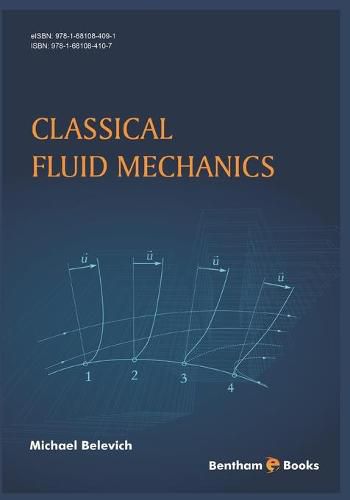Readings Newsletter
Become a Readings Member to make your shopping experience even easier.
Sign in or sign up for free!
You’re not far away from qualifying for FREE standard shipping within Australia
You’ve qualified for FREE standard shipping within Australia
The cart is loading…






This textbook primarily explains the construction of the classical fluid model to readers in a holistic manner. Secondly, the book also explains some possible modifications of the classical fluid model which either make the model applicable in some special cases (viscous or turbulent fluids) or simplify it in accordance with the specific mechanical properties (hydrostatics, two-dimensional flows, boundary layers, etc.). The book explains theoretical concepts in two parts. The first part is dedicated to the derivation of the classical model of the perfect fluid. The second part of the book covers important modifications to the fluid model which account for calculations of momentum, force and the laws of energy conservation. Concepts in this section include the redefinition of the stress tensor in cases of viscous or turbulent flows and laminar and turbulent boundary layers. The text is supplemented by appropriate exercises and problems which may be used in practical classes. These additions serve to teach students how to work with complex systems governed by differential equations. Classical Fluid Mechanics is an ideal textbook for students undertaking semester courses on fluid physics and mechanics in undergraduate degree programs.
$9.00 standard shipping within Australia
FREE standard shipping within Australia for orders over $100.00
Express & International shipping calculated at checkout
This textbook primarily explains the construction of the classical fluid model to readers in a holistic manner. Secondly, the book also explains some possible modifications of the classical fluid model which either make the model applicable in some special cases (viscous or turbulent fluids) or simplify it in accordance with the specific mechanical properties (hydrostatics, two-dimensional flows, boundary layers, etc.). The book explains theoretical concepts in two parts. The first part is dedicated to the derivation of the classical model of the perfect fluid. The second part of the book covers important modifications to the fluid model which account for calculations of momentum, force and the laws of energy conservation. Concepts in this section include the redefinition of the stress tensor in cases of viscous or turbulent flows and laminar and turbulent boundary layers. The text is supplemented by appropriate exercises and problems which may be used in practical classes. These additions serve to teach students how to work with complex systems governed by differential equations. Classical Fluid Mechanics is an ideal textbook for students undertaking semester courses on fluid physics and mechanics in undergraduate degree programs.